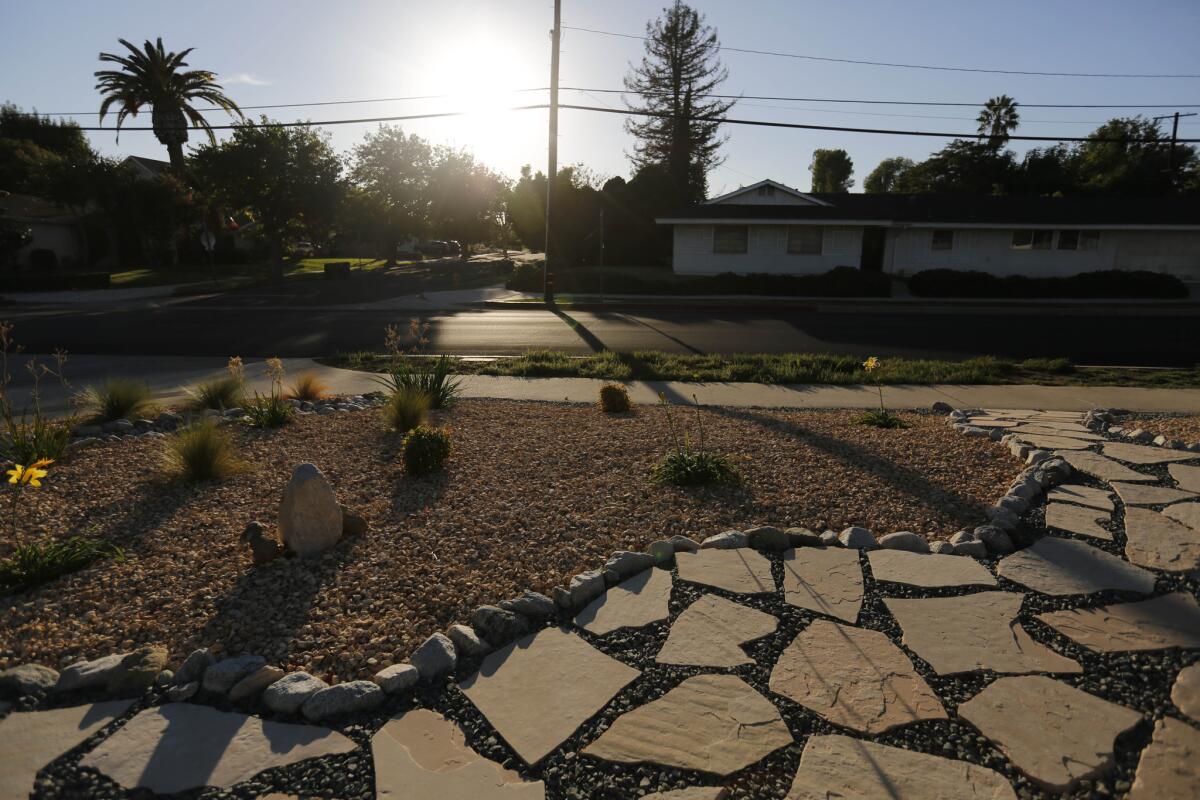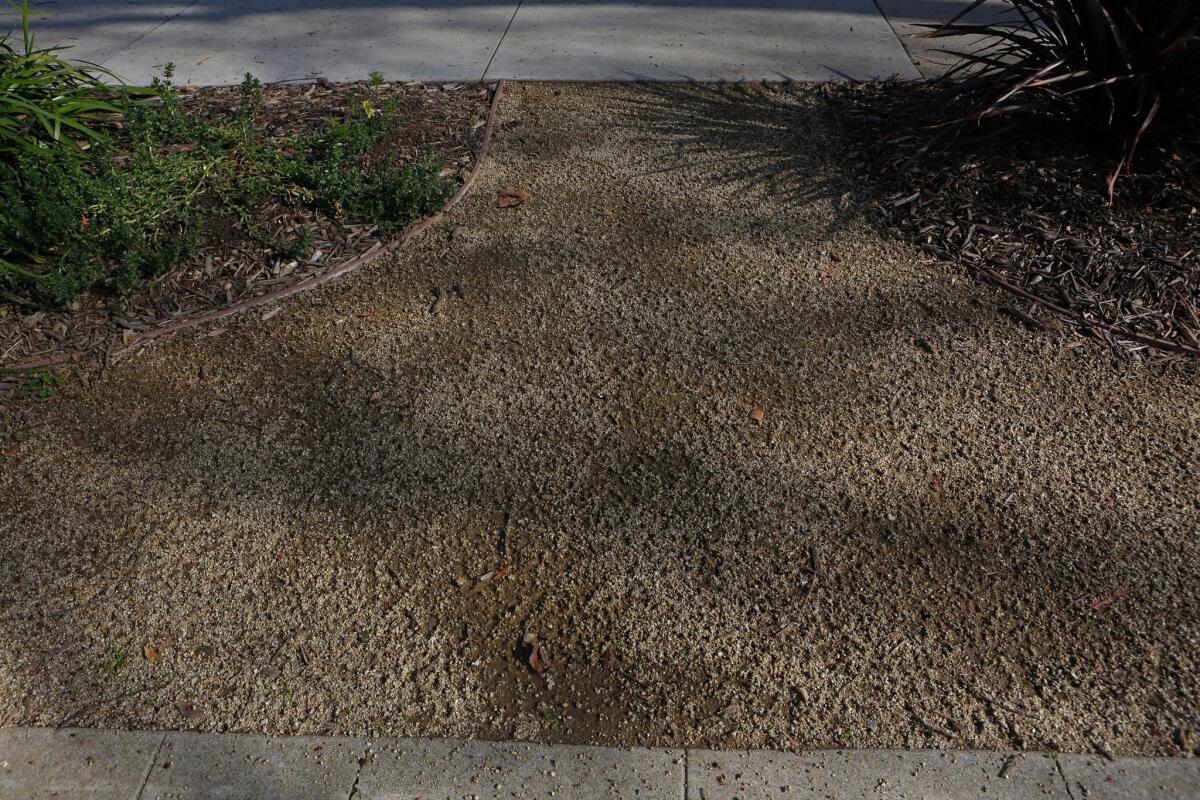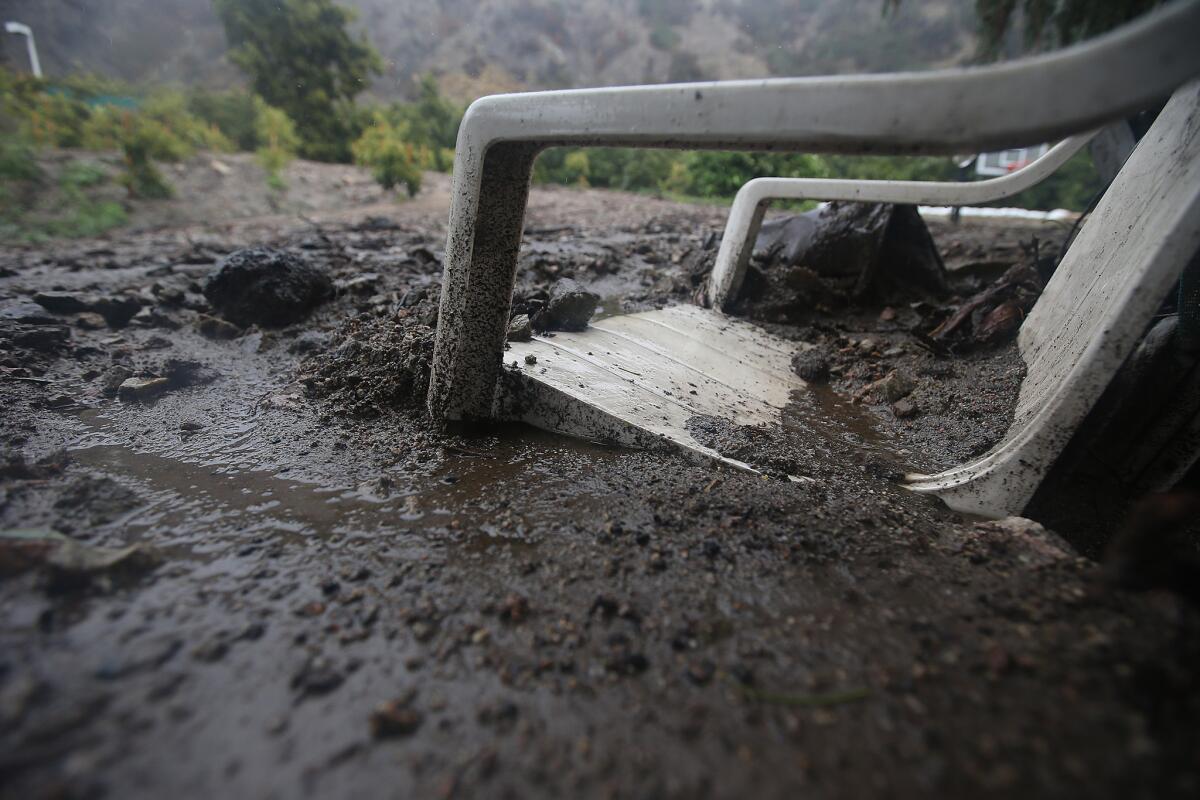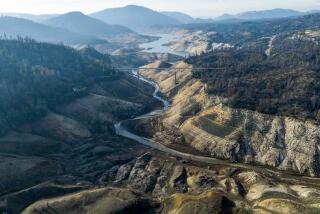7 ways to protect your drought-landscaped property from El Niño rain

Drought-tolerant landscape may not absorb all the water dropped by El Niño rains.
If you, like many Southern Californians, changed your landscaping substantially in light of the drought — took out lawn, put in hardscape or a large amount of decomposed granite, for example — you may have been in for a rude surprise when the El Niño-related rains started to fall this week.
Your yard may be far less receptive to water than it used to be, when the lawn soaked up rainwater like a sponge. New landscaping may have changed the way water flows across your property. If you didn’t pay enough attention to drainage when making the changes, you might find yourself scrambling to deal with standing and ponding water, muddy flows from the decomposed granite and water pooling around your foundation.
“If you went overboard with impervious surfaces, then you will get an increase in runoff,” says Pat Wood, senior civil engineer for Los Angeles County Public Works’ water resources division. The key, she continues, is to “try to protect your house and move the water toward the driveway and street” — which, she notes, is “the first link of the public flood protection system.”
Landscape architect and USC adjunct professor Robert Perry advises homeowners to assess problem areas that cropped up during the recent rains and “be alert” for the next time.
“You may have areas where water collects and creates problems,” he says. “Make some effort to enable the site to drain once limits are reached.” Pre-storm, that can include creating “intentional impoundment zones” — a series of highs and lows in the garden — “where water will collect and infiltrate.”
It also means directing water where you want it to go by placing sandbags or even digging shallow trenches to direct runoff into a desirable spot.
It may take a storm or two to determine where trouble spots lie. Serious drainage problems will require professional help.
In the moment, however, you can mitigate damage with some basic steps. Here are seven of the most common problems that might occur and temporary fixes to help you weather the storm.
1. The problem: Soil is washing off onto the sidewalk.
The solution: Position water-absorbing fiber roll or lengths of straw wattle roll to act as a catchment.
2. The problem: Overflowing rain barrel.
The solution: Make sure your barrel has an overflow outlet. Attach a long length of PVC or flexible pipe to the outlet and direct the overflow away from the house, either into flower or tree beds or toward the street.
3. The problem: The decomposed granite is turning into mud.

Decomposed granite and wood chips might wash away.
The solution: Place barrier material such as rolled straw wattle, sandbags or cement edgers to redirect the flow to an established drainage path or into an open bed. Use a broom to brush off as much ponding water as possible.
4. The problem: Water coursing toward the house or garage
The solution: Use sandbags or other diverters to channel the water flow away from the house. Protect foundations by making sure soil slopes away from the walls. Also lay plastic sheeting on the ground and up the wall a foot or so, securing it with sandbags. (See graphic.)
5. The problem: Water ponding (often caused by a lack of water that has left soil dry and compacted).
The solution: Dig an ample amount of compost into the soil, then top with 3 to 4 inches of mulch. Aside from adding height to a low spot, the combination will absorb and retain the moisture, allowing it to percolate into the soil.
6. The problem: Water ponding around downspouts and threatening the foundation and house structure
The solution: Invest in downspout extenders that channel the water away from the house. Spread several inches of mulch to absorb the water and gravel to curb further erosion.
7. The problem: Water flow is cutting channels into ground
The solution: Line the channel with large gravel, Wood advises: “It will take the force of the flow and the gully won’t cut any deeper.”
What you need to protect your yard, house foundation and roof from El Niño

Flowing mud from hillsides can engulf property.
It’s raining hard, and you need a quick yard fix. Experts recommend that you keep these materials readily available:
Sandbags (enough to create two to three layers) to redirect water flow away from your home or garage and toward the street.
Lengths of water-absorbing “straw wattle” or fiber rolls, to edge soil beds, granite paths and perimeters. (They’ll catch and contain low-level debris and mud flow.)
A shovel.
A roll of 6 mil plastic sheeting to stave off water that might otherwise pond around the foundation and exterior walls. Or to use for roof leaks.
A couple sacks of gravel. Gravel can be used to line channels and gullies created by rain pour, to help prevent further erosion.
Sacks of mulch and compost to mix into hard-pack soil when skies are clear. The result? Better rain water absorption and retention.
Gloves for safety, and to maintain a firm grip on wet tools.
Waterproof boots to maintain good footing.
ALSO
28 things to do to prepare for El Niño rains this season
‘Clutter is never about the stuff’ — an organization expert explains why (and what to do about it)
Organization experts help you clear the holiday clutter with 12 months of tips






